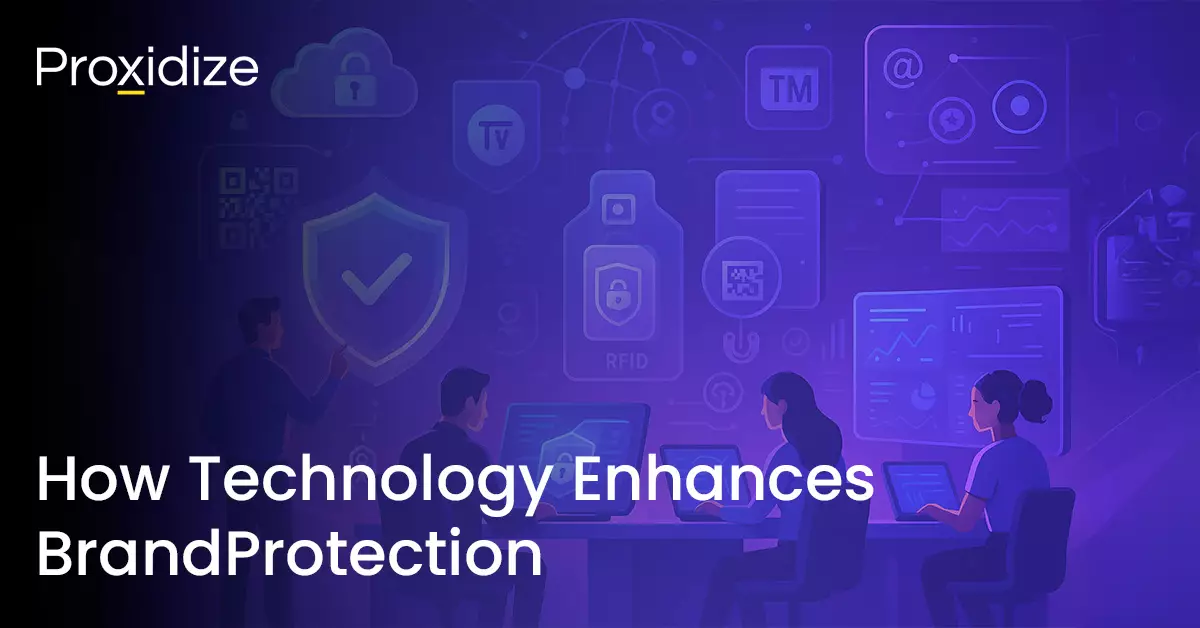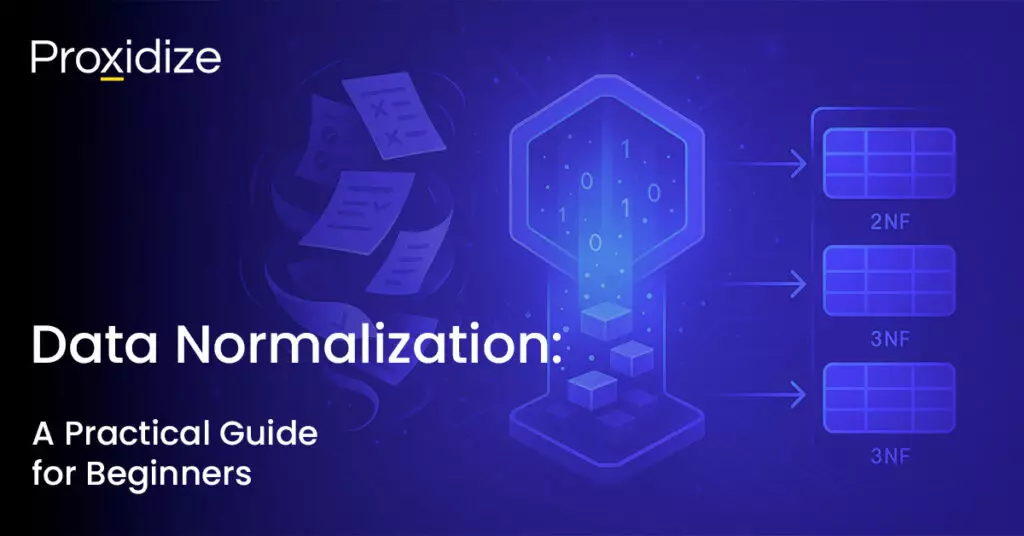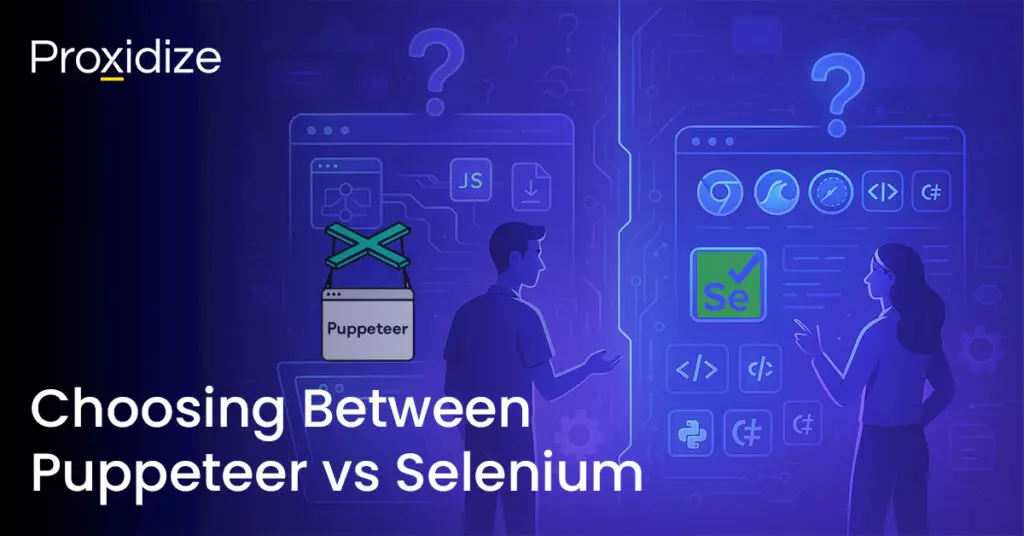With new companies popping up and trying to create the next big thing, there will always be competitors who will try to either replicate a creation or attempt to sell it at a much lower quality to reap the rewards from your years of development and hard work. There are ways to protect yourself against these counterfeits and thieves and that is by developing a strong and stable brand protection strategy. This article will go over what brand protection entails, some key aspects of it, and some tips for building a sound strategy to keep your brand safe.

What Is Brand Protection?
Brand protection is critical to defend a business’s brand identity and intellectual property (IP) against infringement, misuse, and counterfeiting activities. It involves IP enforcement rights through legal measures such as trademarks, copyrights, and patents to secure exclusive usage rights. Brand protection encompasses monitoring the internet for unauthorized use of the brand’s assets, addressing counterfeit online sales, and safeguarding against domain squatting and social media impersonation. Anti-counterfeiting technologies and collaboration with law enforcement play pivotal roles in intercepting fake goods. Consumer education on identifying authentic products helps mitigate risks associated with the strength of the brand. Effective brand protection maintains the brand’s reputation, ensures consumer trust, and protects market share, requiring continuous vigilance and a comprehensive approach.
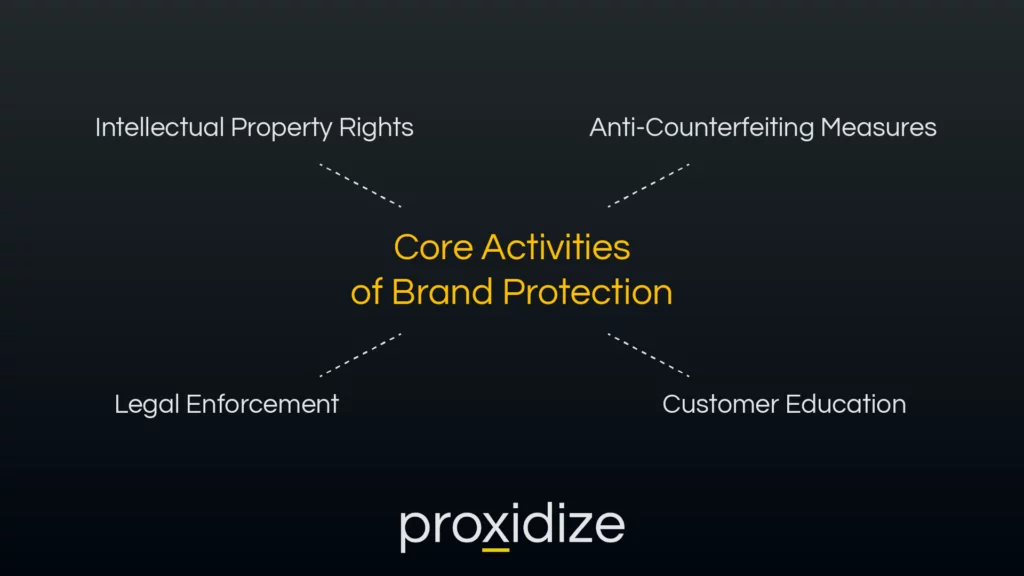
Core Activities of Brand Protection
Brand protection encompasses a wide range of activities to safeguard a brand’s identity and IP from unauthorized use. For this article, we will be covering four of the core activities to provide a better understanding of what it constitutes:
Intellectual Property Rights
One of the most vital aspects of brand protection is the enforcement of IP rights, which include trademarks, copyrights, and patents. These tools give brands the exclusive rights to use their distinctive signs, creative works, and inventions, giving them the right to take legal action against unauthorized uses.
Anti-Counterfeiting Measures
Adopting anti-counterfeiting measures such as blockchain, QR codes, and serialization ensures product authenticity. These technologies help track and trace products throughout the supply chain, deterring counterfeiters and helping customers have the satisfaction that they bought the product from the right company.
Legal Enforcement
Legal enforcement is a crucial component of brand protection. This can involve sending cease and desist letters, filing lawsuits against infringers, and working with online marketplaces and social media platforms to enforce takedown procedures for infringing or counterfeit content.
Customer Education
Educating customers about the risks of counterfeit products and how to identify them is an important strategy. By making customers aware, brands can enlist their help in fighting against counterfeit and infringing products for sale.

Methods of Ensuring Brand Protection
With an understanding of what brand protection is, there needs to be a more detailed understanding of what most companies do to strengthen that protection. Here are some strategic methods that could put the aforementioned activities into practice and assist companies in implementing a brand protection strategy:
Intellectual Property Registration
A great way to ensure IP protection is by registering the trademarks, patents, and copyrights of products or ideas. By registering them, the brand gains legal protection over any infringements or false copies that would assist in taking down the distributor and maintaining a strong brand image. Brands should stay conscious of maintaining and renewing the IP rights as missing out on the renewal deadline could result in competitors purchasing the rights before the brand notices.
Proactive Online Monitoring
Another great way of ensuring brand protection is by monitoring social media channels, e-commerce platforms, and domain registrations to detect intellectual property infringements, counterfeit sales, and unauthorized use of brand assets. Some counterfeiters take advantage of how often customers misspell a URL or company name and attempt to gain the rights to it, copying the original company’s website design to hide themselves as a copy and steal customers and their data. These domains can be as limited as changing one letter or studying the typical mistakes people make and buying all the domains possible.
Anti-Counterfeiting Technologies
Counterfeit products not only undermine sales but also cause reputational damage to a brand and consumer trust. Anti-counterfeiting technologies include the use of holograms, QR codes, and blockchain technology to verify authenticity, as well as work closely with customs and law enforcement to intercept counterfeit goods. Some anti-counterfeiting measures include serialization and tracking such as assigning unique serial numbers to products or adding an RFID tag to scan the product’s authenticity, physical security features such as watermarks or hologram stickers to push authentication further, or even utilizing QR codes for customers to scan, giving them the comfort of knowing their purchase is legitimized.
Collaborations and Partnerships
Collaborating with industry associations, law enforcement agencies, and other brands can enhance protection efforts. Partnerships with online marketplaces and social media platforms are essential for efficient trademark infringement takedown processes as e-commerce sites will be able to authenticate when a copy is being sold as it does not originate from the brand’s organization.
Cybersecurity Measures
Protecting digital assets and customer data through cybersecurity measures is vital. This includes securing websites, online transactions, and customer data from cyber threats and data breaches, which can harm the brand’s reputation and give counterfeiters access to the exact target demographic they could manipulate into buying the replications.
These strategic elements, when integrated into a comprehensive brand protection strategy, help mitigate risks, protect the brand’s reputation, and ensure the brand’s longevity and success in the market. However, the biggest way modern companies battle against fakes and copies is through digital security as most counterfeits utilize e-commerce to sell their products.
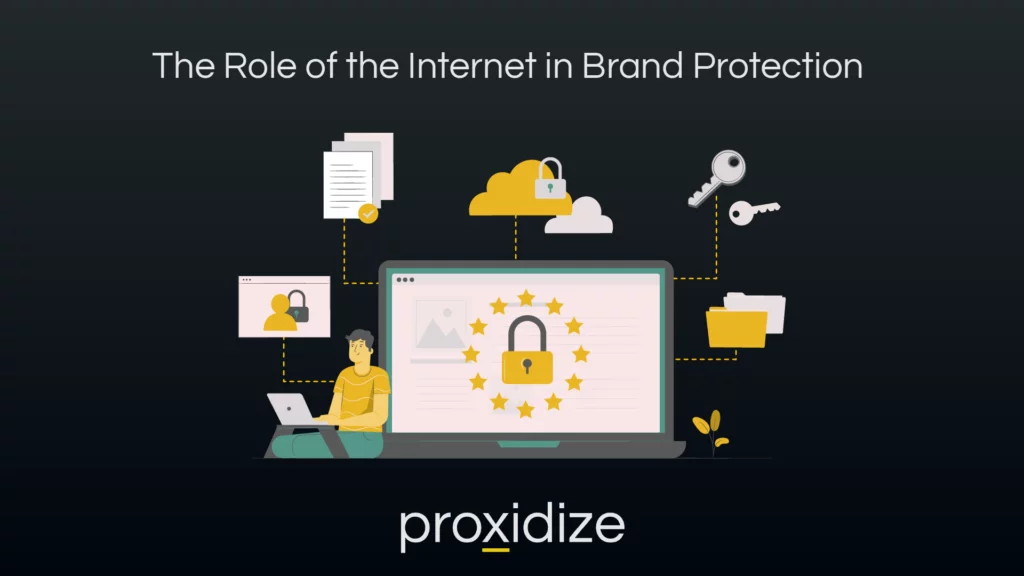
The Role of the Internet in Brand Protection
The age of the internet has made brand protection a much more difficult and important practice for companies to implement as counterfeiters find the convenience of the online space an easier way to hide their counterfeiting actions. This section will go over these practices while also providing advice on how to countermeasure them.
Cybersecurity and Online Monitoring
Integrating advanced cybersecurity protocols to shield the brand from a multitude of online threats is another useful method for brand protection. It ensures robust data encryption which fortifies the brand’s online presence against cyber attacks. The detailed monitoring of social media helps to prevent brand impersonation, while strict adherence to data privacy regulations enhances customer trust.
Examples of online monitoring include monitoring hashtags, keywords, and reviews, through competitor analysis or even keeping track of web squatters, specifically typosquatting. Typosquatting is the practice of users taking advantage of customers’ constant misspelling of websites and buying those domains to try and bait and switch the customer. One way to tackle this is to purchase the domains that have these simple mistakes and have them redirect to the real website, diminishing the chances of hackers taking advantage of regular human error. Some other methods to fight against typosquatting include acquiring alternate TLDs such as the .org or .net extensions, monitoring domain registrations through the Internet Corporation for Assigned Names and Numbers (ICANN) that allows website owners to regularly monitor how their domain name is used on other websites. Similarly, the DNSSEC will protect the domain from cyberattacks which include typosquatting.
Proxies and Protection
The internet has birthed a variety of opportunities for counterfeit products to emerge on low-end e-commerce websites, especially those hosted abroad. These international counterfeiters find confidence in hiding behind geo-restricted websites to hide themselves easily. However, there are ways to bypass geo-restrictions with proxies.
When using proxies, brands can access these geo-restricted websites as they will mask their IP address as one originating from a different nation, as long as the proxy server is hosted within the country of choice. For example, if a US company knows that a Chinese company is infringing on its intellectual property, it would need to get a proxy based in China to access content from there and confirm that the copyright infringement is happening. Additionally, ad verification can also be a useful tool to ensure digital ads appear as intended, ensuring its presence is being portrayed in a positive light online, and that bad actors are not using a company’s brand to commit ad fraud. Proxies can also help when it comes to pricing intelligence as they can be used to search the web for products relating to the one they are selling, which could introduce them to counterfeits of their own product, helping in the search and giving them the chance to take them down.
Proxies have other uses when it comes to brand protection through anonymous browsing, which gives brands the ability to search throughout the internet while remaining undetected. They would be protected against rate limits set in place by the counterfeiter’s website, allowing the brand to do proper research and data-gathering in case they need to take legal action against them. Building onto that, proxies could assist in data scraping which gives the brand easier access to information they need when building a case. Through web scraping, brands do not need to search through the entire internet or even a specific website to discover their copyrighted products are being infringed upon as they can get the data quicker which gives them the time and freedom to act upon taking the copies down before damage is made.
Protecting the Intellectual Property Online
There are also ways to protect the brand’s IP online. Typically, the website itself can be copyrighted which gives the brand the legal right to sue any counterfeiters who attempt to typosquat and take advantage of producing a fake copy of the website. This can be done by simply adding a line of text onto the website stating the ownership of its contents or even copywriting every piece of material within it. This would make taking down the imposter easier and would allow the brand to snatch up the domain they attempted to use and ensure it belonged to them.
Advanced Tools and External Services
Similarly, businesses can be on the lookout for advanced monitoring tools. These tools are able to scan the website itself and be informed of any issues that might pop up including out-of-date anti-virus systems or a bug placed within the site that could go unnoticed if not checked properly. Advanced monitoring tools can assist with any network outages that occur which could prevent customers from making a purchase and build distrust towards the company’s functionality.
There are some external services available to brands to assist them with online monitoring. Companies such as CPA Global and WIPO (World Intellectual Property Organization) assist companies new and old with handling IP protection management rights and staying ahead of the necessary protection measures. Some companies specialize in monitoring e-commerce sites and detecting infringements of a brand’s products and services, allowing the company the freedom and flexibility to outsource the service to an organization that is capable of handling these threats accurately and safely.
Safeguarding Online Transactions
Additionally, safeguarding online transactions becomes a must in terms of brand protection. For businesses established and still starting, having a stable online transaction process can be the deciding factor for customers on the safety of the website. Staying ahead of the newest trends and backdoors that hackers take advantage of will ensure the brand’s transaction methods are safe. One way to be certain of this is through two-factor authentication which forces customers to get access codes from their banks before making a purchase. This will prove to customers that the brand cares about their safety and will be sure that their information is protected due to the active measures taken to prevent this type of fraud from taking place.
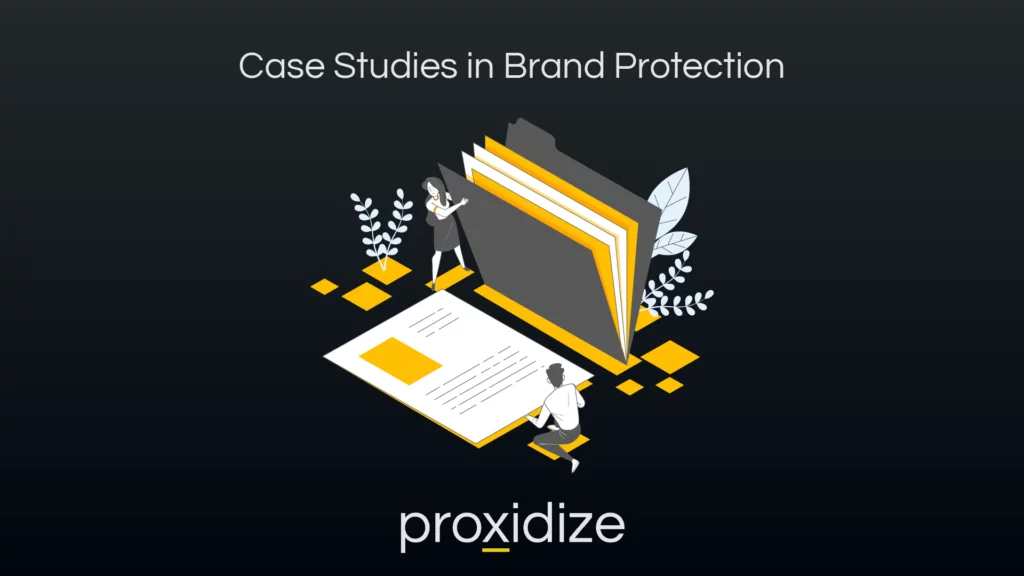
Case Studies in Brand Protection
Have brand protection measures helped companies? We will cover a few companies that found brand protection detrimental to their business.
LEGO
One of the biggest names in the toy industry, LEGO has raised the bar for toy building blocks and changed the game. While this is great for the company itself, it did make them more open to being copied. However, the company smartened up and copyrighted the name and the specific unique shape of their bricks, shapes, and colors. They placed their rights in over 150 countries, ensuring a global hold on the brick-building toy market. They also constantly monitor both online and offline markets and are quick to have notices of infringement submitted. This has allowed them to remain the number one choice for brick-building toys and has made them a top choice for customers.
The brand developed a brand protection strategy wherein they trained customs agents to identify fakes of their products to help stop the forgeries from making their way to the market. They spent close to $300,000 developing this and managed to prevent up to $800,000 in seized counterfeits, making the ROI worth it.
Nike
The leading name in sneakers, Nike has done everything in its power to maintain the spot and keep their sneakers in high demand. They have done this by trademarking their logo and designs in well over 200 countries, giving them an upper legal hand when it comes to issuing cease and desist letters worldwide. They are constantly educating their customers to spot fakes which comes in handy considering they are a top in-demand brand when it comes to sneaker collecting and fighting against sneaker bots. This helped make them a dedicated name in the sneaker industry, ensuring their customers are always getting the best products available.
The shoe brand has created a booklet that details all its IPs to assist customers and retailers on how to stop fakes. This strengthens the brand and shows initiative towards their dedication to ensure brand protection at the highest level.
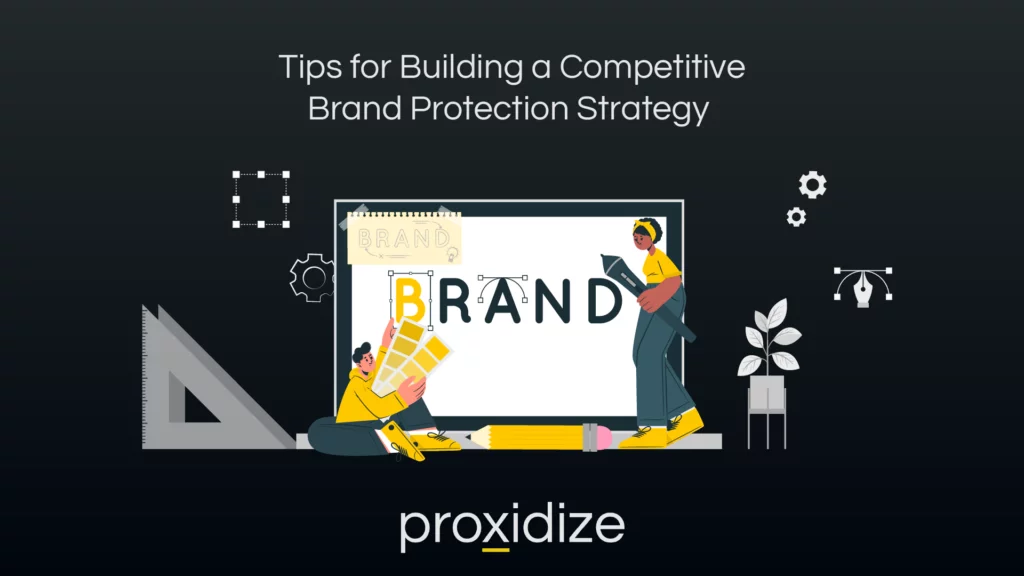
Tips for Building a Competitive Brand Protection Strategy
With all that in mind, how does one begin to create a brand protection strategy? Here are a few tips to keep in mind when developing a strategy:
- Monitor Online Brand Image: The essential starting point is to browse the internet and find out what is being said about the brand and if it is accurate to the product itself. One might find a review of a product that is not sold by the brand or not sold in that quality. This allows the user to identify the origins of the product and find ways to ensure it is not sold again, thus being certain the brand’s image maintains consistency.
- Register Necessary Trademarks: As seen in the case study examples, a strong trademark goes a long way in making the Brand Protection Act easier. It is difficult to tell which part of the product will be manipulated or altered in a way that regular customers would not be able to notice it from the original and have a terrible experience because of it. Companies often trademark the name of the product which is helpful but others have gone above and beyond to trademark the shape, color, font, and box to take every necessary precaution possible to prevent any counterfeits from being produced or even sold enough times to cause serious damage to the brand.
- Invest In Advanced Monitoring Tools: The internet is an endless wasteland with millions of websites created at all times. Staying on top of every e-commerce site and making sure they are not selling fake copies of the product would take forever. Look up monitoring tools that assist in these acts, keeping in mind the speed and efficiency of the tools and being certain that they can perform the task before a customer gets fooled into being negatively affected by it.
- Foster Strong Partnerships: A great way to handle any forgeries on an e-commerce platform is to foster strong partnerships with them. That way, they can know instantly if a product sold on their website is coming from a counterfeit because they know who the original seller is and that the product is being sold from an unauthorized third party.
- Gather Necessary Evidence of Infringement: When building a legal case against infringers, it is best to gather as much evidence as possible to make sure the case is strong enough to cause them to shut down operations entirely. This would in turn help deter any other fraudsters from popping up if they know how in-depth the legal battle is.
- Educate Customers To Spot Fakes: Much like how Nike created a detailed guide on how to spot fakes, making sure customers can do the same will enhance the brand by showing customers that the brand cares about them getting the best possible product.
Conclusion
With the internet constantly growing, brands need to be more vigilant over their products. Building a strong brand protection strategy will be a great help with solidifying their brand as the experts in the specific niche they are working to help. The biggest point in building a strategy is making sure all trademarks and patents are stable. However, that alone cannot save a brand as they need to work diligently to enforce the trademarks and take affirmative action to prevent any forgeries from taking place that hurt the brand. Companies must also stay cautious of international variants of their products as counterfeiters will take advantage of a new or established company’s inability to explore their patents and trademarks are being infringed elsewhere, which would lead to lost revenue for the original company and hurt the brand reputation worldwide. This makes it difficult for the brand to expand to a nation that already has a negative reputation for the product despite never using the officially trademarked product.
